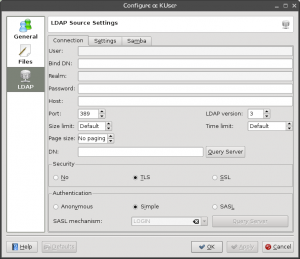KUser/zh-tw: Difference between revisions
m (Created page with "*添加/編輯/刪除用戶 *添加/編輯/刪除用戶組 *密碼管理") |
m (Created page with "== 安裝 ==") |
||
| Line 14: | Line 14: | ||
*密碼管理 | *密碼管理 | ||
== | == 安裝 == | ||
'''KUser''' usually is not installed by default, so it has to be installed manually. '''KUser''' is part of the '''kdeadmin'''-package. | '''KUser''' usually is not installed by default, so it has to be installed manually. '''KUser''' is part of the '''kdeadmin'''-package. | ||
Revision as of 13:12, 28 February 2011
 |
KUser 是個用來管理系統內用戶和用戶組的工具。 |
特性
- 添加/編輯/刪除用戶
- 添加/編輯/刪除用戶組
- 密碼管理
安裝
KUser usually is not installed by default, so it has to be installed manually. KUser is part of the kdeadmin-package.
Once installed you can find it under , or start it with KRunner (Alt+F2) typing
kuser
.
Using KUser
After starting KUser a window opens containing two tabs: and .
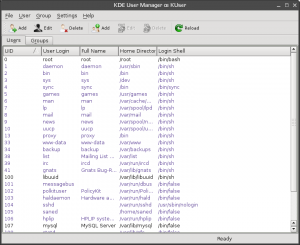
Users
Double-clicking a user opens a dialog with several tabs. The amount of tabs is variable, depending on the type of the user storage system and whether quotas are being used.
User Info
- Modify the user-properties like , , or set/change a for example. You can also .
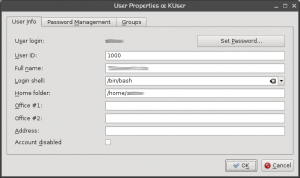
Password Management
- Change password settings, like the time after which a password has to be changed, or set a time at which an account will expire.
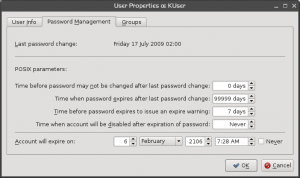
Groups
- Add or remove groups the user belongs to.
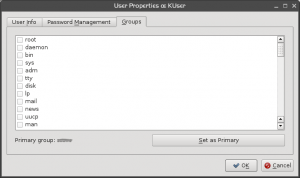
Groups
Double clicking a opens a dialog, where you can of the group and to/from a group.
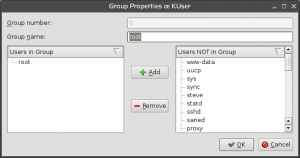
Configure KUser
Click and you can set up defaults for creating a new user:
General
- set the , the or the .
- choose if a will be created and if a (standard configuration files) will be copied to the home folder.
- set a , which creates a own personal group when a user is added and removes it, when the user is removed.
- set a .
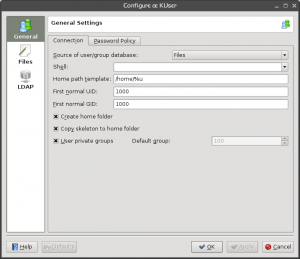
Files
- set default paths for password, group file, password shadow file and group shadow file.
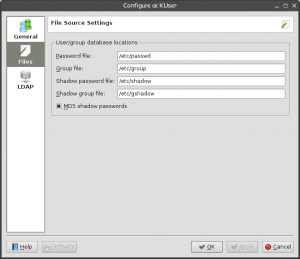
LDAP
- set preferences for users in a local network
